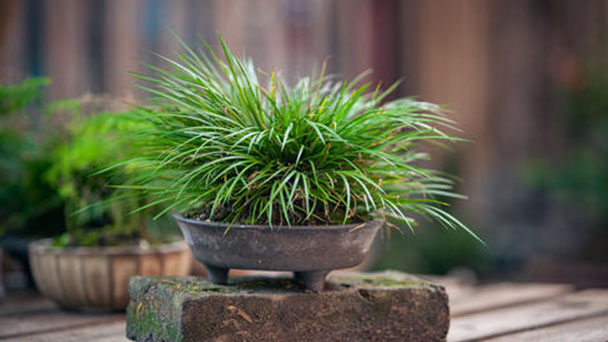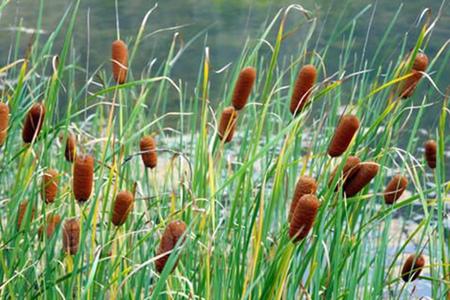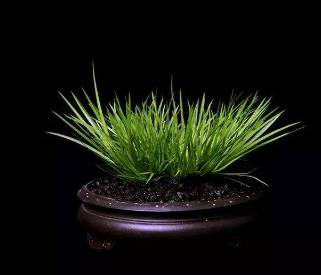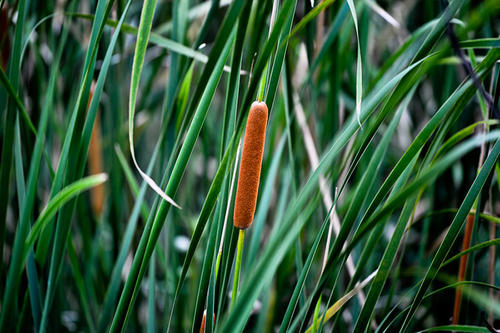Acorus calamus profile
Written by Maggie
Feb 07 2021

Acorus calamus is a perennial aquatic herb with a thick rhizome. Leaves are basal, sword-shaped, midrib prominent, base sheath folded, membranous margin. It is usually found near swamps, streams or paddy fields. Here's more on Acorus Calamus.
Acorus calamus picture

Morphological characteristics of Acorus calamus
Acorus calamus, is a perennial herb, on the calamus family. The whole plant is poisonous, with the greatest calamus root toxicity. Large amounts of ingestion can cause hallucinations. Rhizomes are transverse, slightly flattened, branched, 5 -- 10 mm in diam., skin yellowish brown, aromatic, fleshy roots numerous, 5 -- 6 cm long, with hairy fibrous roots.
Leaf base, both sides of the base membranous leaf sheath is wide 4-5 mm, upward tapering, to 1/3 of the leaf length gradually disappear, fall off. acorus calamus leaf blade is sword-shaped linear, broad at base, pleated, tapering above middle, grassy, green, bright; The middle ribs are markedly uplifted on both sides, lateral veins 3-5 pairs, parallel, slender, mostly extending to the tip.
Acorus calamus flowers are yellow green, inflorescence stalk triangular prism; Leaf - shaped flame bud sword-shaped linear, berry oblong, red. The flowering period is June - September.
Acorus calamus varieties classification
There are three plants, all called Acorus calamus. For example, Rhizoma anemones altaicae, Acorus gramineus and Drug Sweetflag, respectively originate from different plants and have different functions and indications.
1. Rhizoma anemones altaicae:
Rhizoma anemones altaicae dried rhizomes from the buttercup plant Altai anemone. The nature's warm taste is hot, the effect starts to dissipate phlegm. Medicinal properties: slightly spindle shaped, slightly curved, 1 ~ 6cm long, 3 ~ 7mm in diameter. The surface is brownish to dark brown, with many semilocyclic projections, oblique and interactive arrangement, nodes with scaly leaf scars and punctate root scars. The quality is firm and brittle, the broken surface is granular, like white, powdery, has the light yellow vascular bundle little point to form the ring intermittently.Gas is slight, taste is slightly sour and hemp tongue.
2. Acorus gramineus
From the dry rhizome of the Araceae plant Acorus Calamus. The nature is warm, the taste is bitter, the effect changes the wet appetizer, the opening clear phlegm, the awakening of wisdom. The characteristics of the medicinal materials: flat cylindrical, many curved, often branching, 3 ~ 20cm long, 0.3 ~ 1cm in diameter, brown, brownish red or gray-brown surface, rough. There are uneven density links, with fine longitudinal wrinkles; The leaves are slightly triangular in shape, arranged alternately from left to right; Below there are circular punctate root marks or residual fibrous roots; Remnants of hairy squamous foliar substrates are sometimes seen at the nodes. It is hard and brittle, the folded end face is fibrous, like white or reddish, the inner cortex ring is obvious, most of the scattered vascular bundles are small and brown oil spots can be seen. It is aromatic, bitter and slightly spicy. The rhizome is flat cylindrical, slightly curved, often branched, 3 ~ 20cm long, 0.3 ~ 1cm in diameter. The surface is tan, brownish red or grayish yellow, rough, multi - link.
3. Drug Sweetflag
Drug Sweetflag originates from the dry root of Acorus calamus, a calamus plant. The nature is warm, the taste is bitter, the effect reduces phlegm to open the orifical, invigorates the spleen and removes dampness. Medicinal properties: like Acorus calamus, but thick, less branched, 1 -- 1.5cm in diameter. The surface is white to brown-red, the nodes are sparse, and the internodes are 2 ~ 15mm long. Qualitative hard, cross section fiber is bad, show sponge like, have a lot of small voids, slightly muddy gas. The rhizome is oblate, rarely branched, 10 ~ 24cm long, 1 ~ 1.5cm in diameter. The surface is white to brownish red, with fine longitudinal grain; The internodes were 0.2 ~ 1.5cm long, with rounded pitted root marks on the upper side, and brown-red hairs remaining on the nodes. Drug Sweetflag is hard, broken face sponge like, white or light brown; The endodermal ring is obvious in the cross section with many small voids and vascular bundle points. The gas has a strong and specific, bitter, spicy taste.

Origin distribution and growth habit of Acorus calamus
Acorus calamus is originally produced in China and Japan, and also distributed in North America from the former Soviet Union.
Acorus calamus is cultivated at water sides, swamps, or floating islands on lakes, at altitudes of 1,500 to 1,750 m (2,600 m) and often above sea level. The most suitable temperature for growth is 20-25℃, and the growth stops below 10℃. In winter subterranean stems are used to submerge into the mud for wintering. Acorus calamus likes cold wet climate, dank environment, cold resistance, and avoid drought.
Acorus calamus main value
Remove ward off disease
In south China, the festival season hung Acorus calamus, calamus leaves on doors and windows, and drank Acorus calamus to ward off evil diseases. The custom of burning Acorus calamus and mugwort leaves on summer and autumn nights remains to this day. Acorus calamus, with its green leaves and dignified beauty, is great in a potted room. The bonsai made with Acorus calamus is poetic and anti-pollution. On the night, the ancients often placed a pot of Acorus calamus under the oil lamp, because it absorbs the fine dust in the air, thereby preventing the smoky eyes.
Insect repellent
Acorus calamus is also an excellent "green pesticide." After mashing 500 grams of Acorus calamus root stem, add 1-1.5 kg of water and boil it for two hours. The filtered original liquid, mixed with 3-6 kg of water, can effectively prevent and control pests such as rice planthopper, rice leaf hopper, rice stem borer, aphids and red spider.

Ornamental value
Acorus calamus is a commonly used aquatic plant in landscaping, with its rich variety and high ornamental value, and can be fully applied in the process. The Acorus calamus foliage is green, dignified and beautiful, with fragrance, suitable for the waterfront and water greening, and can be potted or used as scenery. Leaves and inflorescence can also be used as materials for flower arrangement. It is of good ornamental value to plant on the banks of lakes and ponds, or to adorn the waterscape in gardens and the corner near the rockery.
Medicinal value
Acorus calamus, with its rich fragrance of flowers and stems, can enlighten the body with enlightenment, dispel phlegm and disperse wind, dispel pestilence, promote wisdom and strengthen the body. Ancient Chinese medicine classics regard Acorus calamus rhizome as the medicine to enhance wisdom, widen the chest, clear the ear and clear the eyes, and detoxify clearing damp.
Latest Updated
- Benefits of Bugleweed - 7 Science-backed Health Benefits
- Bugleweed Dangers & Side Effects - Is It Poisonous?
- How to Plant Evergreen Trees - What You Should Know
- When to Plant Evergreens - Grow Guide for Evergreen Trees
- 12 Wonderful Evergreen Shrubs for Your Garden
- 12 Popular Evergreen Plants with Pictures for Beginners
- When And How To Prune A Lilac Bush Like a Pro
- How to Grow & Care for Lilac Vine (Hardenbergia Violacea)
- Japanese Lilac Tree (Syringa Reticulata) Care & Propagation Guide
- Shumard Oak Pros and Cons - What to Know
Popular Articles
- Winter maintenance of Antirrhinum Majus
- How to Grow Terminalia Mantaly Tree
- How to Grow and Care for Crossostephium Chinense
- How to grow Antirrhinum Majus in spring
- Peristeria Elata (Dove Orchid) Profile: Info & Care Guide
- Underwatered Snake Plant (Sansevieria Trifasciata) - Signs And How To Fix
- How to Care for Brazilian Jasmine Plant (Mandevilla Sanderi)
- How to Grow & Care for Graptopetalum Purple Delight in Summer
- Rosa Chinensis (China Rose): Plant Growing & Care Tips
- How to Care for Baby Sun Rose (Aptenia Cordifolia)